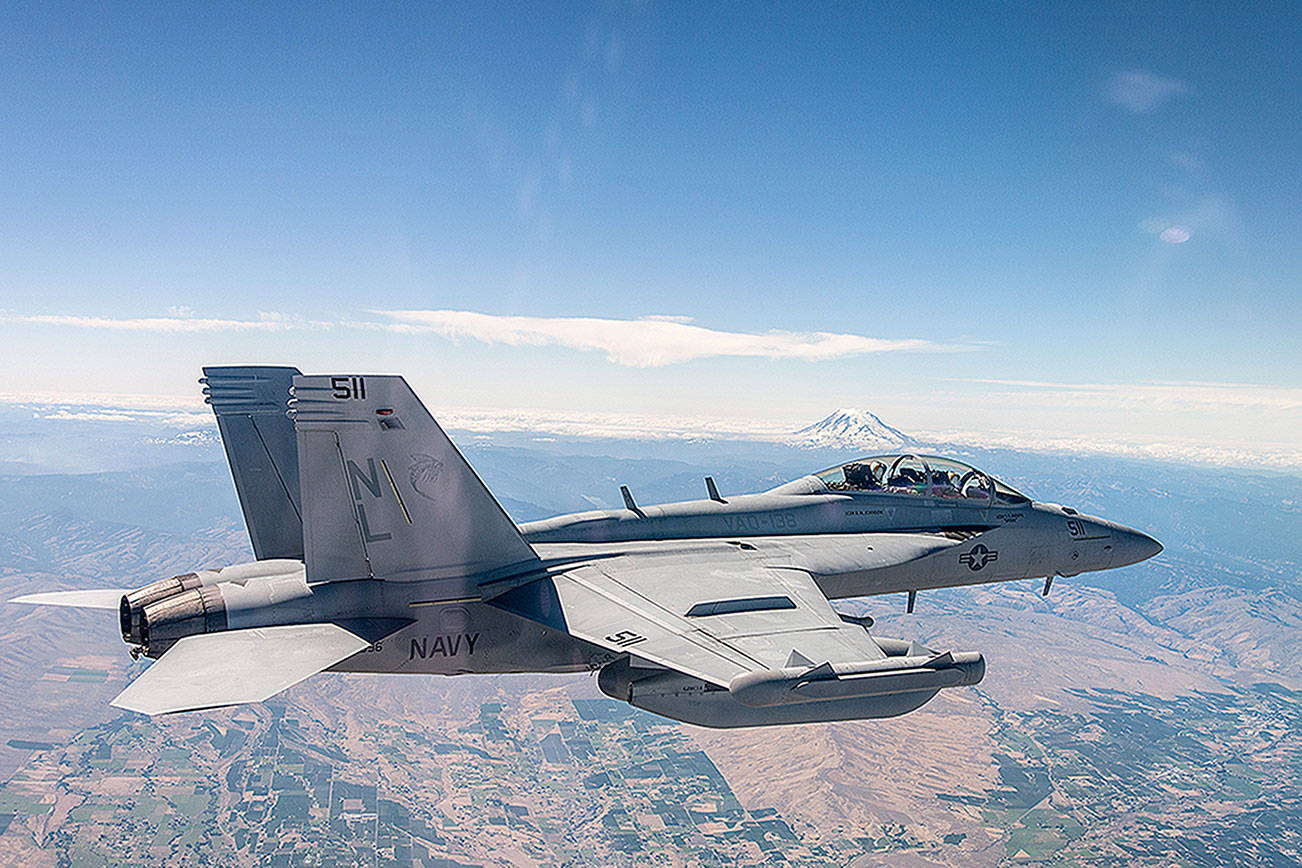Under a decision announced today, the Navy will add 36 EA-18G Growler aircraft to Naval Air Station Whidbey Island and direct 80 percent of the field carrier landing practice to Outlying Field Coupeville.
That means the number of Growler landing practice “passes” at the small Central Whidbey airfield will increase from about 3,000 a year to more than 12,000.
The Navy published the record of decision that invokes the preferred alternative identified in the Environmental Impact Statement without any changes.
In the record of decision, the Navy reports that it carefully considered “the strategic and operational importance of augmenting our nation’s electronic attack capabilities, ensuring quality of pilot training, and balancing the impacts of the proposed action on the human and natural environment.”
It’s bad news for the Central Whidbey residents and groups that had opposed an increase in flights because of the noise of the Growlers; meetings and protest rallies would regularly draw hundreds of people over the last few years.
The Sound Defense Alliance released a statement that points to the impacts the Growlers will have on residents, schools, affordable housing, parks and affordable housing, which is described in the Navy’s own Environmental Impact Statement .
“In the past the Navy has been a good partner,” said Maryon Attwood, chairwoman of the Sound Defense Alliance. “But across the region, our elected officials, community leaders, and citizens all agree that this proposal is just asking too much from our part of Washington. We are not only disappointed, we are outraged. We will not be collateral damage to this expansion directed from Washington D.C.”
Attwood said that the group will continue to work with elected officials and others toward a better outcome.
The Oak Harbor Area Council of the Navy League, on the other hand, released a statement praising the decision as well as the Growler community, which has “a 100 percent success rate at protecting aircraft, plus they have also saved many lives of ground forces.”
The statement said the Navy approach was thorough, balanced and scientificially based throughout the process of completing the Environmental Impact statement, while “activists engaged in litigation, impractical proposals and publicity not supported by the courts of factual examination.”
“Local activism to move Growler operations added significantly to the time and expense of the lengthy, multi-year Environmental Impact Statement (EIS),” the Navy League statement said. “This time and expense could have been better spent by the Navy on national defense operations, training, and readiness.”
The Navy’s record of decision states that an estimated 112,100 Growler operations will occur annually, with 88,000 at the Ault Field base on North Whidbey and 24,100 at OLF Coupeville. Each operation is defined as either a takeoff or landing, so that translates to 12,050 touch-and-go flights at OLF Coupeville.
In addition to Growlers, other aircraft operate at Ault Field, including P-8A, P-3C, EP-3, MH-60 and transients. With the recent additional off three P-8 Poseidon squadrons, the congestion at Ault Field was one reason the Navy cited for directing the majority of training flights to OLF Coupeville.
The decision states that OLF Coupeville provides superior training and that the numbers aren’t a departure from the past.
“Projected operational levels from implementation of Alternative 2A will be comparable to historic flight operations experienced from the 1970s through the 1990s at NAS Whidbey Island complex,” it states.
A Navy press release states that the chosen alternative will impact fewer people overall since North Whidbey has a denser population.
Under the record of decision, the Navy commits to continuing investment in technology to reduce noise.
The decision comes after a lengthy process the Navy followed under the National Environmental Policy Act.
“The proposed action,” the decision states, “will enable the Navy to augment the Navy’s existing Electronic Attack community at NAS Whidbey Island complex with additional aircraft in order to provide Combatant Commanders with expanded electronic attack capabilities to support our national defense requirements consistent with the Navy’s responsibilities under Title 10, United States Code (U.S.C), Section 8062.
• The Whidbey News-Times will continue to update this article as the story develops.




